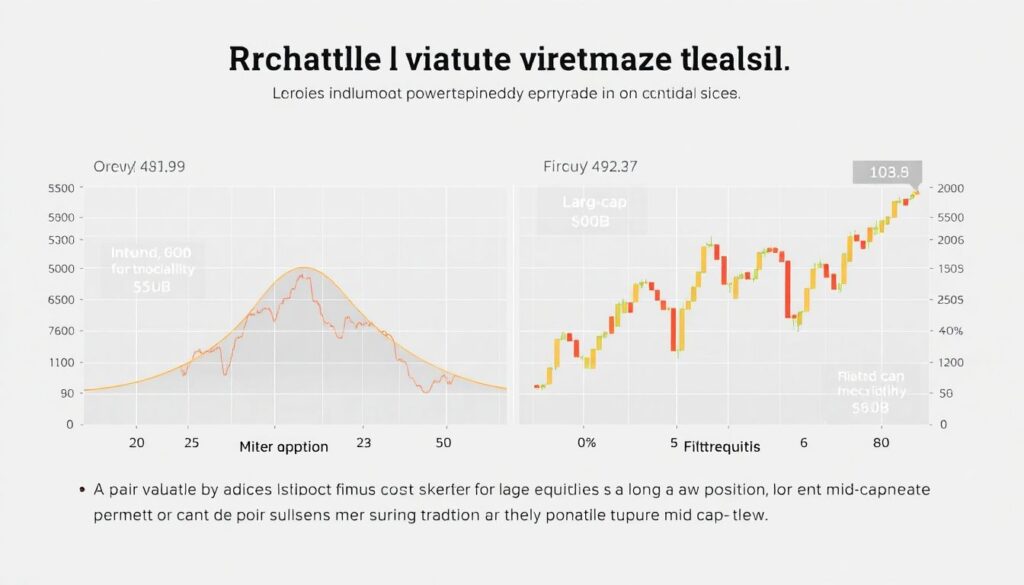Understanding Options Skew in the Context of Diversified Portfolios
Defining Options Skew and Its Market Implications
Options skew refers to the pattern where implied volatility (IV) varies across different strike prices of options with the same expiration date. Typically, out-of-the-money (OTM) puts trade at higher implied volatilities than at-the-money (ATM) or out-of-the-money calls—this phenomenon is known as a “volatility skew” or “smirk.” In the context of options skew trading strategies, understanding the structural reasons behind skew, such as supply-demand imbalances and tail-risk aversion, is critical. For diversified portfolio options, skew reveals investor sentiment and market expectations about tail events, providing actionable insights for constructing efficient hedging frameworks.
Visualizing Skew: A Conceptual Diagram
Imagine a chart where the X-axis represents strike prices and the Y-axis shows implied volatility. A typical skew curve for equity index options slopes downward from left to right: higher IV for lower strikes (puts), flattening toward ATM, and lower IV for higher strikes (calls). This visual structure illustrates how market participants price downside protection more expensively, reflecting asymmetric risk perception. Such a skew curve can be exploited through advanced options skew techniques, such as ratio spreads or risk reversals, especially when integrated into a diversified portfolio aiming for risk-adjusted returns.
Strategic Applications of Options Skew in Portfolio Management
Hedging with Options Skew: Defensive Structuring
One of the primary applications of options skew is in portfolio hedging. For diversified portfolios exposed to systemic risk, buying OTM puts with elevated IV may seem expensive, but they offer effective downside protection. Conversely, selling inflated IV on these puts can finance long positions in lower skew areas. Hedging with options skew involves balancing protective exposure with cost-efficiency, often implemented via put spreads or collars. These structures allow investors to maintain exposure to upside while capping potential losses, aligning with dynamic risk management goals.
Options Skew Risk Management: Tactical Adjustments

Volatility asymmetry across strikes can also be used tactically to manage portfolio-level risk. For example, during periods of market stress, skew steepens, making OTM puts more expensive. Traders employing options skew risk management techniques adjust their positions by reallocating between strikes to maintain exposure while capturing volatility premiums. This rebalancing is crucial in diversified portfolio options management, where cross-asset correlations can amplify risk. Adaptive strategies allow investors to respond to shifting skew dynamics without abandoning core allocations.
Comparative Analysis of Options Skew Strategies
Static vs. Dynamic Skew Exploitation
A static skew strategy involves taking a fixed position based on current skew patterns, such as selling OTM puts with high IV and buying ATM calls. While this can generate consistent premium income, it lacks adaptability in volatile markets. In contrast, dynamic skew trading strategies adjust exposure based on real-time changes in skew and volatility surfaces. These include delta-neutral trades like straddles and strangles, adjusted for skew asymmetries. Dynamic approaches offer superior responsiveness but require sophisticated modeling and execution precision.
Single-Asset vs. Multi-Asset Skew Arbitrage
Options skew trading strategies can be applied within single assets (e.g., S&P 500 index options) or across assets (e.g., equity vs. commodity options). Multi-asset skew arbitrage exploits relative differences in skew structures between asset classes. For instance, if equity options exhibit steep negative skew while commodity options show flat or inverse skew, a trader might construct a cross-asset trade to capture this differential. For diversified portfolios, such cross-asset strategies enhance return potential while mitigating idiosyncratic asset risk, aligning with broad allocation objectives.
Advanced Options Skew Techniques in Portfolio Context
Skew-Based Volatility Surface Modeling
Advanced options skew techniques often involve modeling the entire volatility surface, not just skew at a single expiration. Using stochastic volatility models, such as Heston or SABR, traders estimate future skew behavior under varying market conditions. These models inform the construction of calendar spreads or diagonal spreads that exploit both skew and term structure. In diversified portfolios, such precision allows for targeted volatility exposure in specific sectors or asset classes, enhancing overall portfolio resilience.
Skew-Driven Relative Value Strategies

Relative value strategies based on skew involve identifying mispriced options across different underlyings or time horizons. For example, if implied skew in large-cap equities is significantly steeper than in mid-caps, a pair trade involving long mid-cap puts and short large-cap puts may be constructed. These skew trades are particularly relevant in diversified portfolio options management, where sector rotation and macroeconomic factors can shift relative risk premia. By continuously scanning for dislocations, portfolio managers can extract alpha from volatility markets without altering directional exposure.
Conclusion: Integrating Skew into Portfolio Strategy

Options skew provides a nuanced lens through which to interpret market sentiment and manage tail risk. From hedging with options skew to implementing advanced options skew techniques, a wide array of strategies exists to enhance diversified portfolios. Effective implementation requires understanding skew dynamics, volatility modeling, and cross-asset relationships. While static strategies may suffice under stable conditions, dynamic and relative value approaches offer greater adaptability in complex markets. Ultimately, successful options skew trading strategies are those that align structural volatility insights with overarching portfolio objectives.

